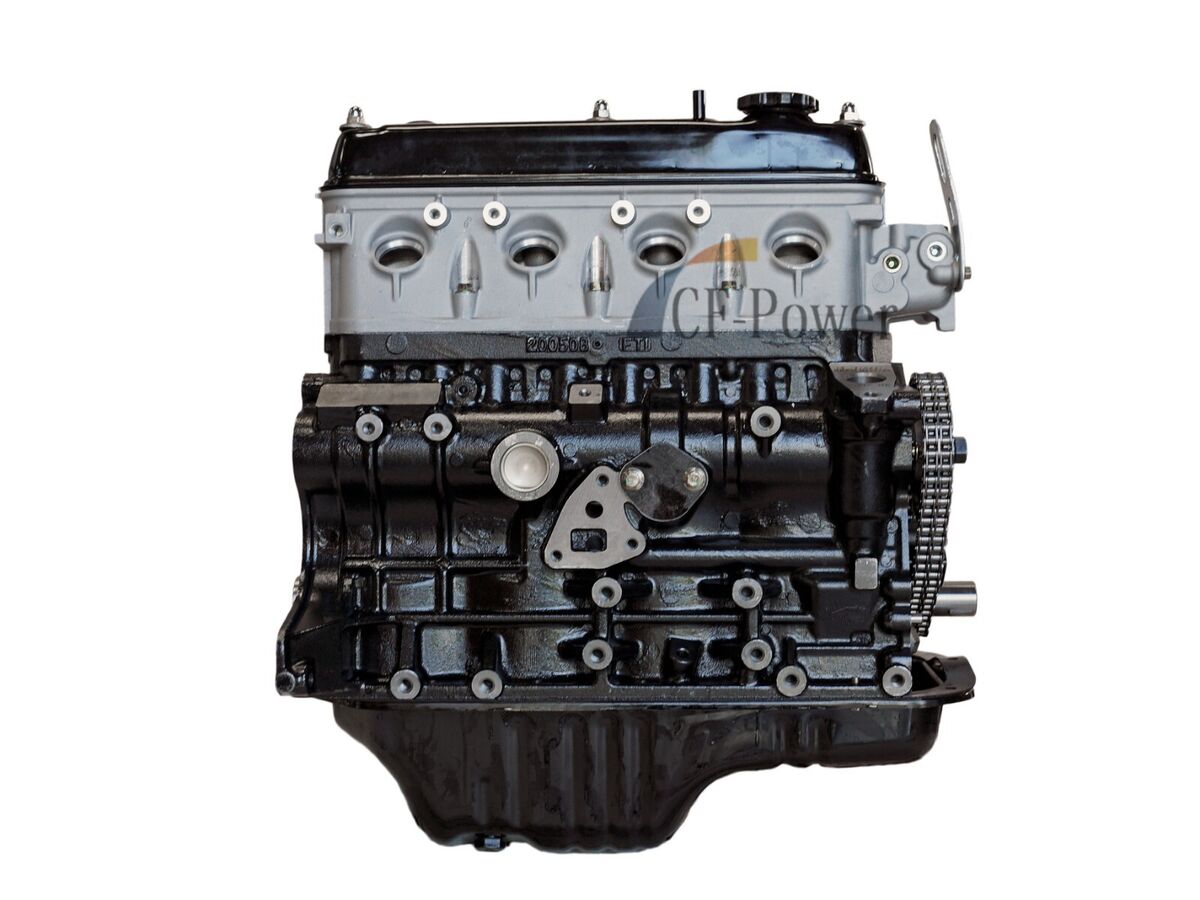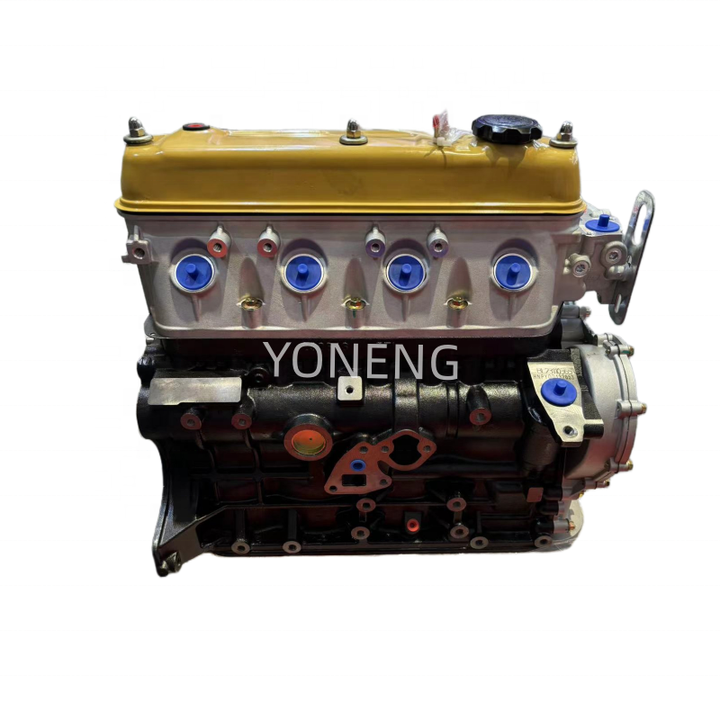How the 4Y Engine Contributes to a Smooth and Powerful Driving Experience
How the 4Y Engine Contributes to a Smooth and Powerful Driving Experience
Blog Article
Exploring the Numerous Types of Engine: Which One Fits Your Requirements?
Inner combustion engines proceed to control due to their reliability, while electric engines are getting traction for their sustainability. Crossbreed engines supply a versatile concession, and diesel engines stand out for their power in demanding applications.

Internal Burning Engines
Internal burning engines (ICEs) are the foundation of contemporary transportation, powering a large array of vehicles from automobiles to planes. These engines operate on the principle of transforming fuel right into mechanical power with a series of controlled explosions within a combustion chamber. The most common types of ICEs consist of fuel engines, diesel motor, and rotary engines, each developed to satisfy details efficiency and performance needs.
Fuel engines normally use trigger ignition, while diesel motor count on compression ignition, leading to distinct differences in fuel efficiency and power outcome (4y engine). Rotating engines, or Wankel engines, supply a compact design and smooth operation, yet are less typically utilized in mainstream applications
ICEs have undertaken considerable developments in innovation, including the intro of turbocharging and gas injection systems, which boost total efficiency and performance. In spite of their performance renovations, ICEs encounter raising examination as a result of their environmental influence, particularly pertaining to greenhouse gas emissions. As the automobile sector advances, the future of ICEs stays a subject of argument, stabilizing performance, performance, and environmental considerations. They proceed to play an essential duty in worldwide transportation facilities.
Electric Engines
As issues about environmental sustainability and fossil gas reliance expand, electric engines have actually become an engaging alternative to inner burning engines. These engines use electrical motors powered by batteries or fuel cells, providing a cleaner and more efficient motive powers.
Among the primary benefits of electrical engines is their decreased discharges. Unlike standard engines that shed nonrenewable fuel sources, electric engines create zero tailpipe discharges, considerably reducing air contamination and contributing to enhanced public health and wellness. Furthermore, the efficiency of electric motors frequently goes beyond that of internal burning engines, converting a higher percentage of energy from the power source right into useful power for movement.
Electric engines are additionally remarkable for their quiet operation, making them excellent for city settings. 4y engine. The simpleness of their design causes fewer relocating components, which can lead to minimized maintenance costs and increased integrity with time
Nonetheless, difficulties remain, including battery production influences, charging facilities, and variety constraints. Despite these obstacles, the expanding financial investment in electrical vehicle innovation and sustainable energy sources points toward a promising future for electrical engines, positioned to play a critical role in the change towards sustainable transportation.
Crossbreed Engines
Blending the benefits of both electric and conventional internal combustion engines, hybrid engines stand for a flexible remedy in the pursuit for reliable and sustainable transport. These engines integrate a fuel or diesel motor with an electrical motor, permitting for boosted fuel performance and decreased exhausts contrasted to standard cars.
Hybrid engines run look at here now in numerous settings, using the electric motor for low-speed driving and the interior combustion engine for greater speeds or when more power is required. This vibrant procedure not just enhances gas economy however additionally adds to a smoother driving experience. Regenerative braking is an additional crucial feature, catching power usually lost throughout stopping and redirecting it to reenergize the battery.

As consumers significantly focus on eco-friendliness, crossbreed engines stick out as a functional choice, using a reliable equilibrium of performance, performance, and environmental duty. This flexibility makes them suitable for city travelling and long-distance travel alike.
Diesel Motor
Effectiveness and power are trademarks of diesel engines, which have long been favored for their robustness and gas economic climate. These engines operate on the concept of compression ignition, where air is pressed to a heat prior to fuel is infused, igniting it without the need for spark plugs. This process makes it possible for diesel engines to achieve higher thermal efficiency contrasted to gas engines, translating into far better fuel mileage and reduced co2 exhausts.
Diesel motor are particularly appropriate for durable applications such as trucks, buses, and commercial machinery, where torque and sturdiness are paramount. Their style commonly consists of more powerful elements to stand up to the greater pressures produced during operation, resulting in longer life span and minimized maintenance expenses.

Alternative Fuel Engines
While diesel engines have long dominated the landscape of heavy-duty power sources, different fuel engines are getting traction as practical choices for an extra sustainable future. These engines make use of a range of gas, such as compressed gas (CNG), hydrogen, ethanol, and lp, aiming to lower greenhouse gas discharges and reliance on visit homepage nonrenewable fuel sources.
One significant benefit of different fuel engines is their prospective to reduced carbon impacts. CNG engines send out fewer pollutants compared to traditional diesel engines, making them suitable for city transportation systems and fleets looking for to enhance air quality. Ethanol, stemmed from biomass, not only minimizes discharges but also supports agricultural economic situations.
Hydrogen gas cells stand for a cutting-edge growth in this realm, using zero-emission power with a chemical response in between hydrogen and oxygen. However, challenges such as facilities growth and manufacturing prices stay barriers to prevalent adoption - 4y engine.
Conclusion
In conclusion, picking the suitable engine type necessitates mindful consideration of certain requirements and preferences. Internal combustion engines provide dependability, while electrical engines prioritize sustainability and minimized upkeep. Crossbreed engines incorporate the advantages of both, boosting efficiency, whereas diesel motor give premium power and torque for durable applications. Different fuel engines present environmentally friendly choices, albeit with possible facilities obstacles. Ultimately, a thorough evaluation of driving practices and ecological values will assist in a notified choice relating to engine option.
Hybrid engines offer a functional compromise, and diesel engines stand out for their power in requiring applications. The most typical types of ICEs consist of gas engines, diesel engines, and rotating engines, each developed to meet details efficiency and efficiency demands.
Unlike conventional engines that burn fossil fuels, electric engines generate zero tailpipe emissions, dramatically lowering air contamination and contributing to enhanced public health.Crossbreed engines operate in a number of modes, utilizing the electrical motor for low-speed driving and the interior combustion engine for higher rates or when more power is needed. Hybrid engines combine the benefits of both, improving performance, whereas diesel engines provide superior power and torque for sturdy applications.
Report this page